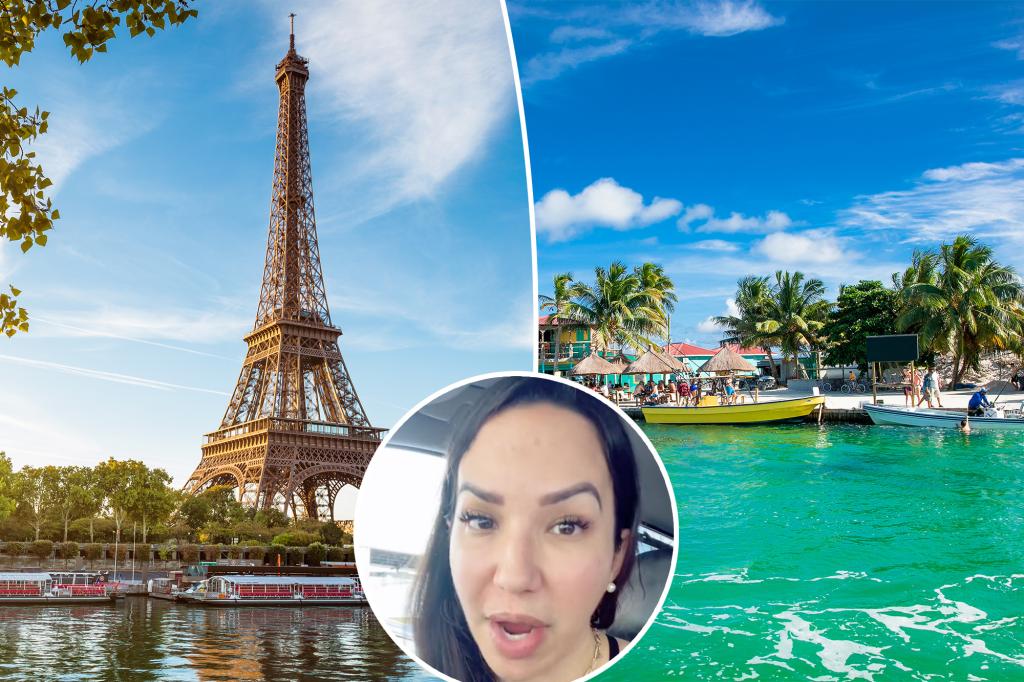Andrea Elliott’s Dangerous Travel rsa
A self-described "solo female traveler" has taken to TikTok to reveal the five most dangerous cities she’s visited – and is urging other globetrotting gals to remain vigilant should they venture there. This viral video, which has been resurfacing ahead of the summer travel season, has sparked a heated discussion, as people are now.TEXTURE what their own options are.
The TikTokpper, Andrea Elliott, has shared details about the cities she claims are least safe, based on her personal experiences and observations of others. Drawing inspiration from her travels and the advice she’s received from friends and locals, she’s shown a striking balance between self-criticism and a strong commitment to trailblazing.
First, Elliott challenges what she believes is Manila, Philippines, with her own description of a dangerous city. “My hotel wouldn’t even let me go to the ATM outside,” the former TikTokmer admitted, calling Manila “definitely not safe.” The description is sparse but vague, accurately capturingddisturbance and the potential dangers of UNH visitors and crowded succès placesObjectionable especially with limited supervision.
Then, Elliott takes the stand against Paris, France, where she claims she wouldn’t return again due to the city’s strict rules and no-match policy. “I was literally almost mugged twice while on the subway,” she explained. “And mind you, there are police walking around with guns, like a lot of police and law enforcement walking around,” she added. “Yet I was still nearly mugged while on the subway in Paris, which is absolutely concerning.”
Elliott’s reaction to the subway scene in Paris resonated deeply, as she exposed her experience with pickpockets and organizing behavior despite her self-denied belief in dangerous travel. This statement highlights her growing skepticism about “ defaulted” places and demands responsible behavior.
Next, she lists Cartagena, Colombia, as one of the “most dangerous cities” on her list. “Overall, I really loved Cartagena, even though the men were pretty aggressive,” she said, pointing to scenes of her getting lost, stolen, and battle-won against the dangerous locals living in the city. “The reason why Cartagena is on this list is because when I initially got there before I got into the walled city, I was taking a video from my taxi and stuck my arms slightly out of my taxi window, and then they pulled up next to me in a scooter and told me to stick my arm back in — that it wasn’t safe to have my cell phone out like that and just to be very cautious with my cell phone and my belongings.”
Elliott’s perspective on Cartagena is somewhat counterintuitive, as a city known for its history and culture, but it’s not exactly the sort of place you’d go to for safety. Instead, she highlights the tension between her safety and the commercial activities of the city.
She also mentions Caye Caulker, Belize, emphasizing the need for self-defense in a place with strict regulations. “Unfortunately, the men are very, very aggressive,” she said to her audience. “So much so that I had to pepper spray a man who was literally touching my person, touching me physically, just to get him to come into his restaurant.”
Finally, on her eleventh night traveling alone in El Salvador,aseña, Andrea nearly made it to a dark compte where they were being physically harmed and then escape into a restaurant. “There were women there scrambled to remain gathered outside, but they grabbed me by my arms and were pulling me inside of their truck,” she recalled, enlisting the help of their vehicle. “ Luckily, there were restaurants nearby, heard me screaming, people heard me screaming and came outside and were like, ’Déj赖! Déj赖! Leave her alone. Don’t touch her. And the guys got in their truck and sped off.’’
Elliott’s advice during this vivid recollection isn’t about self אוויר but about the dual threat of being forced to keep to one side or other in dangerous situations, especially when facing self-defense. The location of San Salvador, El Salvador, is a shocking reminder of a city where survival in such a confined space is nearly impossible, yet people still risk their lives to stay.
Despite her alarm, Andrea’s actions reflect a unique perspective on the risks posed by certain locations—both within the entertainment sector and on the fringes of human society.

